 July 2024 PPM Data – Information for Nielsen Audio’s July 2024 ratings period (June 20 – July 17) has been released for: Washington, Boston, Miami, Seattle, Detroit, Phoenix, Minneapolis, San Diego, Tampa, Denver, Baltimore, and St. Louis.
July 2024 PPM Data – Information for Nielsen Audio’s July 2024 ratings period (June 20 – July 17) has been released for: Washington, Boston, Miami, Seattle, Detroit, Phoenix, Minneapolis, San Diego, Tampa, Denver, Baltimore, and St. Louis.
No share or rank thresholds are required for spoken-word stations to be included here.
DNA – DNA = Did Not Appear – Does Not Appear
Comparisons are June 2024 – July 2024 (6+).
WASHINGTON, DC
News/Talk
WMAL 3.6 – 3.6, #11 – #11
WFED .1 – DNA, #30 – DNA (Nationals)
News
WTOP & WTLP 9.5 – 10.7, #2 – #1
Business News WDCH .6 – .8, #23 – #20
Business News WDCH Stream DNA – DNA, DNA – DNA
WMZQ-HD2 Black Information Network DNA – DNA, DNA – DNA
WUST DNA – DNA, DNA – DNA
Sports Talk
WJFK-FM 1.4 – 1.7, #17 – #17 (Nationals)
WJFK-FM Stream .6 – .7, #23 – #22 (Nationals)
WTEM .2 – .4, #27 – #26
WTEM Stream .2 – .1, #28 – #30
WSBN .1 – .1, #30 – #30
WTSD DNA – DNA, DNA – DNA
WJFK-AM DNA – DNA, DNA – DNA (Nationals)
Public Radio News/Talk
WAMU 11.3 – 10.4, after 32 months in succession at #1, slips to #2
Notes: Not only is WTOP & WTLP’s +1.2 (9.5 – 10.7) Washington, DC’s largest (6+) June 2024 – July 2024 increase, the all-news outlet advances to #1, thus ending public radio news/talk WAMU’s consecutive string of consecutive months on top at 32.
BOSTON
News/Talk
WRKO 2.9 – 3.3, #13 – #10
WXKS-AM .6 – .8, #23 – #23
News
News – Talk WBZ-AM 4.7 – 4.7, #7 – #6
Business news WRCA .1 – .2, #28 – #25
Black Information Network WJMN-HD2 DNA – DNA, DNA – DNA
Sports Talk
WBZ-FM 9.9 – 7.7, seventh straight month at #1
WEEI-FM 3.5 – 4.1, #10 – #8 (Red Sox)
WVEI-AM DNA – .2, DNA – #25
WEEI-FM Stream DNA – DNA, DNA – DNA (Red Sox)
WEEI-AM DNA – DNA, DNA – DNA (Red Sox)
Public Radio News/Talk
WBUR 5.4 – 5.1, #5 – #5
WGBH 3.1 – 3.1, #11 – #13
Notes: Whereas sports talk/Red Sox flagship WEEI-FM’s +.6 (3.5 – 4.1) is Boston’s largest (6+) June 2024 – July 2024 increase, similarly-formatted WBZ-FM’s -2.2 (9.9 – 7.7) represents the most significant (6+) June 2024 – July 2024 decrease by any station in the 24 PPM-markets analyzed thus far. Nonetheless, WBZ-FM is #1 for the seventh month in a row.
MIAMI
News/Talk
WIOD 1.9 – 1.9, #21 – #21
WFTL DNA – .1, DNA – #37
News
WXBN Black Information Network DNA – DNA, DNA – DNA
Sports Talk
WQAM Stream .4 – 1.3, #32 – #23
WQAM 1.1 – 1.0 #23 – #24
WINZ .5 – .5, #31 – #30 (Marlins)
WMEN .1 – .1, #38 – #37
WSFS-HD2 DNA – DNA, DNA – DNA
WAXY DNA – DNA, DNA – DNA
Public Radio News/Talk
WLRN 4.3 – 4.5, #7 – #7
WLRN-HD2 DNA – .1, DNA – #37
WLRN-HD2 Stream DNA – .1, DNA – #37
SEATTLE
News/Talk
KTTH 2.0– 2.7, #22 – #16
KVI 2.1 – 2.5, #21 – #20
KPTR .1 – .1, #29 – #29
KIRO-FM 4.9 – DNA, #5 – DNA
News
KNWN-AM & KNWN-FM 2.5 – 3.6, #18 – #10
KHHO Black Information Network DNA – DNA, DNA – DNA
Sports Talk
KIRO-AM 3.9 – 3.7, #10 – #9 (Mariners)
KJR-FM 1.6 – 1.7, #23 – #22
KJR-AM .6 – .3, #26 – #26
Public Radio News/Talk
KUOW 6.6 – 7.7, #2 – #1
KSWS DNA – DNA, DNA – DNA
Notes: The +1.1 by public radio news/talk KUOW (6.6 – 7.7) and all-news KNWN-AM & KNWN-FM (2.5 – 3.6) is Seattle’s largest (6+) June 2024 – July 2024 increase.
News/talk KIRO-FM was ranked fifth in June 2024 (4.9, 6+), but is unlisted in July 2024.
DETROIT
News/Talk
WJR 1.9 – 2.6, #16 – #16
WFDF .5 – .5, #22 – #22
WJR Stream DNA – DNA, DNA – DNA
News
WWJ 4.7 – 5.0, #9 – #9
WWJ Stream .3 – .4, #24 – #24
WDFN Black Information Network .1 – .1, #26 – #27
Sports Talk
WXYT-FM 7.5 – 7.8, #2 – #2 (Tigers)
WXYT-FM Stream 1.1 – 1.1, #20 – #20 (Tigers)
WXYT-AM .1 – .1, #26 – #27 (Tigers)
WXYT-AM Stream DNA – DNA, DNA – DNA (Tigers)
Public Radio News/Talk
WDET 1.8 – 2.1, #17 – #17
WUOM 1.4 – 1.5, #18 – #19
Note: News/talk WJR’s +.7 (1.9 – 2.6) is Detroit’s largest (6+) June 2024 – July 2024 increase.
PHOENIX
News/Talk
KFYI 3.5 – 3.8, #9 – #6
KTAR-FM 2.3 – 3.1, #18 – #11
News
None
Sports Talk
KMVP-FM 2.6 – 3.1, #14 – #11 (Arizona Diamondbacks)
KTAR-AM .2 – .1, #31 – #33 (Arizona Diamondbacks)
KDUS .1 – DNA, #33 – DNA
KGME DNA – DNA, DNA – DNA
KTAR-AM Stream DNA – DNA, DNA – DNA (Arizona Diamondbacks)
KTAR-FM HD2 DNA – DNA, DNA – DNA
Public Radio News/Talk
KJZZ 2.5 – 2.5, #15 – #15
MINNEAPOLIS
News/Talk
WCCO 4.5 – 4.8, #9 – #9 (Minnesota Twins)
KTLK-AM 2.2 – 2.3, #14 – #14
KTMY 2.2 – 1.7, #14 – #17
WCCO Stream .5 – .5, #24 – #24 (Minnesota Twins)
News
KQQL-HD2 Black Information Network DNA – DNA, DNA – DNA
Sports Talk
KFXN 6.7 – 6.7, #3 – #4
KSTP-AM .1 – .1, #30 – #29
KQQL-HD3 DNA – DNA, DNA – DNA
Public Radio News/Talk
KNOW 6.0 – 6.7, #8 – #4
KNOW Stream .6 – .6, #23 – #23
SAN DIEGO
News/Talk
KOGO 3.5 – 3.8, #11 – #10
KLSD .5 – .4, #23 – #23
News
KSSX-HD2 Black Information Network DNA – DNA, DNA – DNA
Sports Talk
KWFN 4.6 – 4.2, #7 – #7 (Padres)
KGB-AM .4 – .3, #24 – #24
KWFN Stream DNA – DNA, DNA – DNA (Padres)
Public Radio News/Talk
KPBS 7.4 – 7.2, #1 – #2
TAMPA
News/Talk
WFLA 3.5 – 3.7, #11 – #11
WHPT 3.6 – 3.0, #9 – #14
News
Business news WHNZ DNA – DNA, DNA – DNA
WBTP-HD2 Black Information Network DNA – DNA, DNA – DNA
Sports Talk
WDAE 1.6 – 1.5, #18 – #20 (Rays)
Public Radio News/Talk
WUSF 2.4 – 2.0, #16 – #17
WUSF Stream DNA – DNA, DNA – DNA
WMNF-HD3 Stream DNA – DNA, DNA – DNA
DENVER
News/Talk
KOA 2.6 – 2.4, #14 – #14 (Colorado Rockies)
KDFD 1.2 – 1.4, #22 – #20
KHOW 1.3 – 1.1, #21 – #23
News
None
Sports Talk
KKFN 1.8 – 1.9, #18 – #17
KKSE-FM 1.1 – .8, #23 – #26
KAMP .1 – .1, #32 – #33
KEPN DNA – DNA, DNA – DNA
KKSE-AM DNA – DNA, DNA – DNA
Public Radio News/Talk
KCFR 3.0 – 2.9, #13 – #13
KUNC 1.0 – .7, #26 – #29
KRCC .1 – .1, #32 – #33
BALTIMORE
News/Talk
WBAL 3.0 – 2.9, #12 – #12 (Orioles)
WCBM 2.0 – 2.4, #14 – #14
News
WTOP & WTLP 1.0 – 1.2, #17 – #17
Business News WDCH .5 – .5, #22 – #22
WQLL Black Information Network DNA – DNA, DNA – DNA
Sports Talk
WJZ-FM 3.3 – 3.3, #11 – #10
WJZ-AM .1 – DNA, #26 – DNA
WJZ-FM Stream DNA – DNA, DNA – DNA
Public Radio News/Talk
WYPR 3.6 – 4.6, #10 – #8
WYPR HD2 Stream DNA – DNA, DNA – DNA
ST. LOUIS
News/Talk
KMOX 4.2 – 4.6, #11 – #10 (Cardinals)
KTLK-FM 1.7 – 1.8, #16 – #15
KFTK 1.6 – 1.6, #17 – #16
KMOX Stream 1.0 – 1.1, #19 – #19 (Cardinals)
KFTK Stream .1 – .2, #29 – #25
News
KATZ-FM HD2 Black Information Network .1 – .1, #29 – #27
Sports Talk
WXOS 3.0 – 2.7, #14 – #13
Public Radio News/Talk
KWMU 4.9 – 5.1, #9 – #9
Up next: July 2024 overviews for Portland; Charlotte; San Antonio; Sacramento; Pittsburgh; Salt Lake City; Las Vegas; Orlando; Cincinnati; Cleveland; Kansas City; and Columbus.
Mike.Kinosian@gmail.com
Share this with your network
![]() U.S. Other takeaways include: Listeners aged 18-34 spend 32% of their daily ad-supported audio time with podcasts; and podcasts consistently drive top funnel advertising impact. Nielsen says its Podcast Brand Impact Database draws on nearly 2,000 case studies and shows that podcast ads continue to drive strong brand awareness, motivate listeners to learn more, and purchase products. See the full report here.
U.S. Other takeaways include: Listeners aged 18-34 spend 32% of their daily ad-supported audio time with podcasts; and podcasts consistently drive top funnel advertising impact. Nielsen says its Podcast Brand Impact Database draws on nearly 2,000 case studies and shows that podcast ads continue to drive strong brand awareness, motivate listeners to learn more, and purchase products. See the full report here.


 (NMI).” Nielsen adds, “As podcast listenership continues to grow, it is critical for advertisers to have sophisticated tools and data to effectively plan, measure and optimize their audio investments. Nielsen Podcast Fusion in NMI will provide an even more holistic view of media planning and help users uncover valuable insights and demonstrate the effectiveness of their campaigns. NMI users will also be able to optimize media plans by specific podcast networks and genres, as well as top podcast programs.” NPR and Ocean Media are among the charter subscribers at launch.
(NMI).” Nielsen adds, “As podcast listenership continues to grow, it is critical for advertisers to have sophisticated tools and data to effectively plan, measure and optimize their audio investments. Nielsen Podcast Fusion in NMI will provide an even more holistic view of media planning and help users uncover valuable insights and demonstrate the effectiveness of their campaigns. NMI users will also be able to optimize media plans by specific podcast networks and genres, as well as top podcast programs.” NPR and Ocean Media are among the charter subscribers at launch. says, “Weekday shows ‘Sunrise Carolina with Joey Hudson,’ ‘The Tara Show,’ ‘The Mike Gallagher Show,’ ‘Straight Talk with Bill Frady,’ and ‘The Charlie James Show’ also secured the top spot across all prime dayparts with persons 12+ and adults 35+.” Audacy South Carolina operations manager Mark Hendrix says, “The exceptional performance of our Audacy Greenville stations is a direct reflection of our incredible talent, the passion they bring every day, and their connection with our listeners.”
says, “Weekday shows ‘Sunrise Carolina with Joey Hudson,’ ‘The Tara Show,’ ‘The Mike Gallagher Show,’ ‘Straight Talk with Bill Frady,’ and ‘The Charlie James Show’ also secured the top spot across all prime dayparts with persons 12+ and adults 35+.” Audacy South Carolina operations manager Mark Hendrix says, “The exceptional performance of our Audacy Greenville stations is a direct reflection of our incredible talent, the passion they bring every day, and their connection with our listeners.” solutions executive Michael Katz writes that, according to Scarborough consumer purchase data, consumers were asked to “select auto dealerships where you or other household members might shop if you were planning to buy or lease a new or used vehicle (including in-store and online shopping)” and 36% were unable to name an auto dealer. Katz adds that one out five auto intenders (21%), those who will lease or buy a new or used vehicle in the next year, cannot name one auto dealer. He says, “Auto dealers need ads that teach people who they are and build their brands.”
solutions executive Michael Katz writes that, according to Scarborough consumer purchase data, consumers were asked to “select auto dealerships where you or other household members might shop if you were planning to buy or lease a new or used vehicle (including in-store and online shopping)” and 36% were unable to name an auto dealer. Katz adds that one out five auto intenders (21%), those who will lease or buy a new or used vehicle in the next year, cannot name one auto dealer. He says, “Auto dealers need ads that teach people who they are and build their brands.” 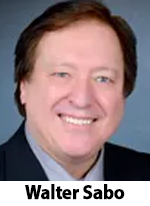 At first, I thought it was a joke. When I realized there were serious people having serious meetings about the joke, it became both horrific and symptomatic
At first, I thought it was a joke. When I realized there were serious people having serious meetings about the joke, it became both horrific and symptomatic July 2024 PPM Data – Information for Nielsen Audio’s July 2024 ratings period (June 20 – July 17) has been released for: Washington, Boston, Miami, Seattle, Detroit, Phoenix, Minneapolis, San Diego, Tampa, Denver, Baltimore, and St. Louis.
July 2024 PPM Data – Information for Nielsen Audio’s July 2024 ratings period (June 20 – July 17) has been released for: Washington, Boston, Miami, Seattle, Detroit, Phoenix, Minneapolis, San Diego, Tampa, Denver, Baltimore, and St. Louis.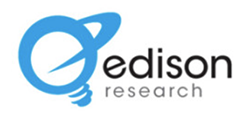 for advertisers, artists, broadcasters, and podcasters alike, The Record offers a unique view of time spent with ad-supported content. The total use of audio is significant – Americans spend more than four hours with audio every day – and it’s important to view it from multiple lenses. Consumers give nearly 70% of their daily ad-supported audio time to radio, 20% to podcasts and the rest to streaming audio (music services) or satellite radio (select channels). Data from the first quarter of 2024 indicates that (for over-the-air and streaming combined), by format news/talk was tops with the 35+ demographic with a 12.3 share of total audience and was also first in persons 18+ with a 10.8 share of total audience.
for advertisers, artists, broadcasters, and podcasters alike, The Record offers a unique view of time spent with ad-supported content. The total use of audio is significant – Americans spend more than four hours with audio every day – and it’s important to view it from multiple lenses. Consumers give nearly 70% of their daily ad-supported audio time to radio, 20% to podcasts and the rest to streaming audio (music services) or satellite radio (select channels). Data from the first quarter of 2024 indicates that (for over-the-air and streaming combined), by format news/talk was tops with the 35+ demographic with a 12.3 share of total audience and was also first in persons 18+ with a 10.8 share of total audience. 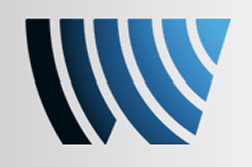 media budget, adding AM/FM radio to a digital/TV plan sharply builds reach. Via Nielsen Commspoint, the media allocation planning tool, a wide range of monthly digital/TV media plans were examined. Very small, light, medium, and heavy campaigns were examined. The lightest digital/TV campaign reached 10% of the market. The heaviest reached 60%. Then a 20% allocation of AM/FM radio was introduced. The results were stunning. Across the seven monthly campaigns, from the lightest to the heaviest, the addition of AM/FM radio generated significant lifts in reach. Shifting 20% of the lightest TV/digital campaign to AM/FM radio caused reach to double. Introducing the 20% allocation of AM/FM radio to medium-sized campaigns causes reach to soar by 36% to 55%. Even the heaviest TV and digital campaign saw reach grow 20% with the addition of AM/FM radio to the plan.”
media budget, adding AM/FM radio to a digital/TV plan sharply builds reach. Via Nielsen Commspoint, the media allocation planning tool, a wide range of monthly digital/TV media plans were examined. Very small, light, medium, and heavy campaigns were examined. The lightest digital/TV campaign reached 10% of the market. The heaviest reached 60%. Then a 20% allocation of AM/FM radio was introduced. The results were stunning. Across the seven monthly campaigns, from the lightest to the heaviest, the addition of AM/FM radio generated significant lifts in reach. Shifting 20% of the lightest TV/digital campaign to AM/FM radio caused reach to double. Introducing the 20% allocation of AM/FM radio to medium-sized campaigns causes reach to soar by 36% to 55%. Even the heaviest TV and digital campaign saw reach grow 20% with the addition of AM/FM radio to the plan.”  It seems every hour Nielsen and Pierre Bouvard of Cumulus fame (formerly of Westwood One) put out a release stating that radio is just fine, thank you. Radio is more persuasive than TV, direct mail, streaming and print. Radio is a proven success for over 100 years. Most of the buildings housing Procter & Gamble were built on radio – not TV – advertising success. Happily, P&G realized radio’s clout and is now a dominant radio advertiser – again!
It seems every hour Nielsen and Pierre Bouvard of Cumulus fame (formerly of Westwood One) put out a release stating that radio is just fine, thank you. Radio is more persuasive than TV, direct mail, streaming and print. Radio is a proven success for over 100 years. Most of the buildings housing Procter & Gamble were built on radio – not TV – advertising success. Happily, P&G realized radio’s clout and is now a dominant radio advertiser – again! 1. Financial solvency laws. Consolidation is not the problem; it actually saved the radio industry. The problem is the 1986 rule change that dropped financial solvency requirements for station ownership. Prior to 1986, stations could not be purchased with debt. A potential owner had to prove that they could meet the expenses of a station through the duration of its license. Once the financial efficacy rule was dropped and stations could be purchased with debt, the industry was financially decimated. Prediction: Financial solvency laws will be re-instated.
1. Financial solvency laws. Consolidation is not the problem; it actually saved the radio industry. The problem is the 1986 rule change that dropped financial solvency requirements for station ownership. Prior to 1986, stations could not be purchased with debt. A potential owner had to prove that they could meet the expenses of a station through the duration of its license. Once the financial efficacy rule was dropped and stations could be purchased with debt, the industry was financially decimated. Prediction: Financial solvency laws will be re-instated.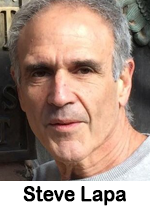 Let’s talk streaming because I don’t get what is happening. Maybe you do.
Let’s talk streaming because I don’t get what is happening. Maybe you do.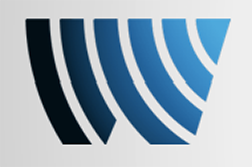 AM/FM radio listeners are 39% more likely to pay $301+ to have their taxes prepared and show greater familiarity, interest, consideration, and usage of tax category brands; 2) AM/FM radio ads drive site traffic for tax preparation brands: In the LeadsRx attribution study of a tax preparation service’s multi-wave campaign, AM/FM radio generated between a 43% to 47% increase in website traffic; 3) Branding early and often in tax preparation service ads drives more site traffic: LeadsRx found the top three creative executions that drove site traffic for a tax preparation service had the marketer’s brand name within the first five seconds of the ad; and 4) compared to other radio formats, a 2023 tax prep campaign on news/talk and sports stations realized a higher percentage share of interactions than the percentage share of their Nielsen ad impressions.
AM/FM radio listeners are 39% more likely to pay $301+ to have their taxes prepared and show greater familiarity, interest, consideration, and usage of tax category brands; 2) AM/FM radio ads drive site traffic for tax preparation brands: In the LeadsRx attribution study of a tax preparation service’s multi-wave campaign, AM/FM radio generated between a 43% to 47% increase in website traffic; 3) Branding early and often in tax preparation service ads drives more site traffic: LeadsRx found the top three creative executions that drove site traffic for a tax preparation service had the marketer’s brand name within the first five seconds of the ad; and 4) compared to other radio formats, a 2023 tax prep campaign on news/talk and sports stations realized a higher percentage share of interactions than the percentage share of their Nielsen ad impressions.  2018, Nielsen’s Total Audience Report reveals the 18-49 weekly reach of live and time-shifted TV has dropped -26%. Over the same period, TV’s daily time spent is down -59%; 2) cord-cutting is a major driver of TV’s audience collapse: The MRI Simmons January 2023 “How Americans Watch TV” report reveals 51% have cut the cord; 3) While a huge number of Americans have abandoned traditional TV for streaming, AM/FM radio remains the dominant audio platform: According to Edison Research’s Q2 2023 “Share of Ear,” AM/FM radio has a massive 69% share of U.S. ad-supported audio. AM/FM radio audience shares are over 17 times larger than ad-supported Pandora and ad-supported Spotify.
2018, Nielsen’s Total Audience Report reveals the 18-49 weekly reach of live and time-shifted TV has dropped -26%. Over the same period, TV’s daily time spent is down -59%; 2) cord-cutting is a major driver of TV’s audience collapse: The MRI Simmons January 2023 “How Americans Watch TV” report reveals 51% have cut the cord; 3) While a huge number of Americans have abandoned traditional TV for streaming, AM/FM radio remains the dominant audio platform: According to Edison Research’s Q2 2023 “Share of Ear,” AM/FM radio has a massive 69% share of U.S. ad-supported audio. AM/FM radio audience shares are over 17 times larger than ad-supported Pandora and ad-supported Spotify. 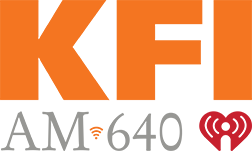 Wagoner writes, “Why is KFI so successful – isn’t conservative talk dead? Yes, it is… and it’s been decades since KFI was considered ‘conservative talk’ (even when it wasn’t). There have always been a balance of viewpoints on the station; as it moved away from politically centered topics to more general topics, it matched the mood of listeners who wanted to be entertained more than they wanted to be angry.”
Wagoner writes, “Why is KFI so successful – isn’t conservative talk dead? Yes, it is… and it’s been decades since KFI was considered ‘conservative talk’ (even when it wasn’t). There have always been a balance of viewpoints on the station; as it moved away from politically centered topics to more general topics, it matched the mood of listeners who wanted to be entertained more than they wanted to be angry.” 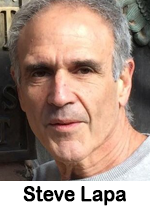 Bulletin: “Linear TV” is no longer the winner.
Bulletin: “Linear TV” is no longer the winner.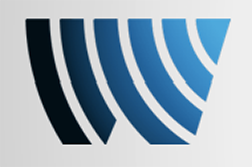 These DMA analyses are based on all radio stations in the U.S., not just Nielsen subscribers. The top DMA is Glendive, Montana with 72.1% of the population using AM radio. While the most AM radio listening tends to be done in Midwestern DMAs, there is still substantial AM listening done in Eastern markets. For example, Chicago is the #8 DMA for AM listening with 51.2%, but Seattle-Tacoma is not far behind at #14 with 42.8%, San Francisco-Oakland-San Jose is #20 with 41.3%, and the top two DMAs by population – New York and Los Angeles – show AM listenership is done by 31.8% of the population.
These DMA analyses are based on all radio stations in the U.S., not just Nielsen subscribers. The top DMA is Glendive, Montana with 72.1% of the population using AM radio. While the most AM radio listening tends to be done in Midwestern DMAs, there is still substantial AM listening done in Eastern markets. For example, Chicago is the #8 DMA for AM listening with 51.2%, but Seattle-Tacoma is not far behind at #14 with 42.8%, San Francisco-Oakland-San Jose is #20 with 41.3%, and the top two DMAs by population – New York and Los Angeles – show AM listenership is done by 31.8% of the population.